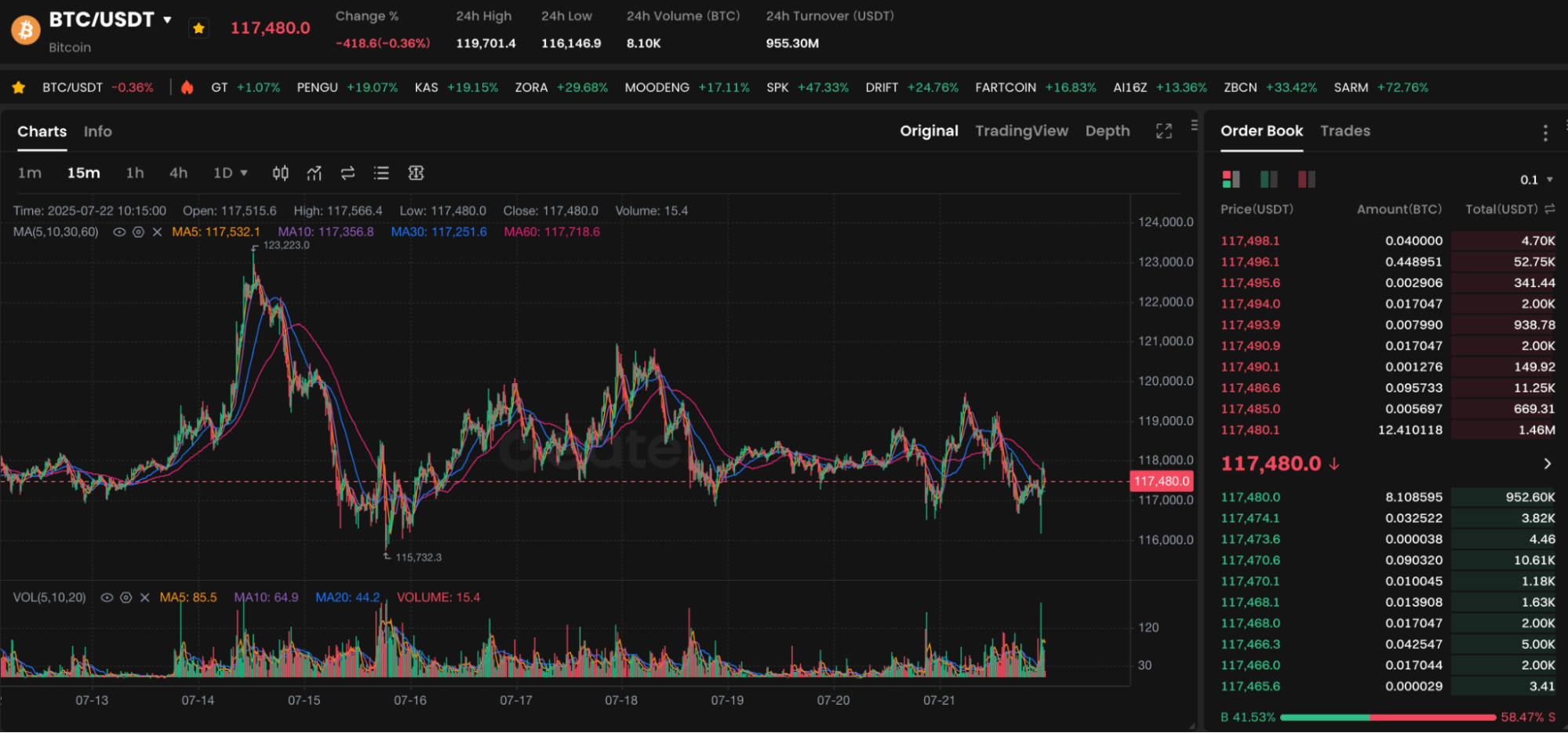Bitcoin Price Hovers Below $120,000: Diverging Capital Flows Signal Bull Continuation or Imminent Correction?
Latest Price Trends and Market Structure

Chart: https://www.gate.com/trade/BTC_USDT
In the past two weeks, Bitcoin has attempted multiple times to break through the $120,000 threshold, but as of today, has again failed to do so. Currently, BTC is trading in a consolidation range between $117,700 and $118,500. Over the last 24 hours, BTC reached a high of $119,524 and a low of $116,767. This highlights sustained buying interest around the $116,000 level.
Meanwhile, both Ethereum and XRP continue to show strong performance, with ETH trading at $3,787 and XRP trading at $3.55. Short-term capital is increasingly flowing into these altcoins.
ETF Inflows Hit Record Highs: Bullish Sentiment Persists
The latest ETF disclosure data shows spot Bitcoin ETFs have seen cumulative net inflows of $239 million this week, marking the sixth straight week of positive inflows and underscoring continued strong institutional bullish sentiment.
BlackRock and Fidelity products continue to lead in net inflows, pointing to the steady participation of traditional financial institutions. Furthermore, recent U.S. Congressional activity around crypto regulation—such as the GENIUS Act—indicates a neutral to bullish outlook, laying the groundwork for future compliant crypto products.
However, despite robust ETF inflows, Bitcoin’s price keeps hitting resistance. This indicates that while buyer demand remains firm, active selling is equally significant, reflecting a structural tug-of-war in the market.
Technical Analysis: Watch for False Breakouts
From a technical perspective:
- The RSI is near 66, remaining in bullish territory, but has failed to set new highs for two consecutive days.
- The MACD histogram is narrowing, indicating waning short-term momentum.
- The daily 10-day and 20-day moving averages are poised to form a death cross; without a swift rebound, a short-term price correction is possible.
The critical resistance remains $120,000. A breakout above this level could open up room toward $123,000 or even $125,000. Conversely, a dip below $116,000 may trigger a rapid pullback toward $113,500. The 50-day moving average support sits at $110,300.
Is the Bull Market Structure at Risk?
While the broader bull market structure is intact, short-term market confidence is under pressure. Key factors for investors to consider include:
- Profit-taking pressure: Many 2024 entrants are sitting on gains exceeding 50%, increasing the urge to book profits.
- Upcoming Fed meeting: If inflation data rises and the Fed adopts a hawkish tone, Bitcoin may come under pressure.
- Altcoin capital rotation: ETH and XRP are attracting new inflows, which results in a short-term shift away from Bitcoin.
Strategic Guidance for Investors
- If BTC pulls back to the $116,000–$117,000 zone and holds support, this likely signals a consolidation phase within the uptrend.
- If BTC breaks above $120,000, consider opening a modest long position with a clear take profit target.
- If BTC closes below $116,000 for several sessions in a row, consider reducing exposure. Alternatively, shift to a wait-and-see approach to manage risk.
Conclusion
Bitcoin’s failure to surpass $120,000 signals the market has not yet achieved a decisive breakout. While favorable factors such as ETF growth remain in place, short-term capital flows are diverging. Investors should exercise heightened caution and adjust their strategies dynamically. They should integrate both technical indicators and macroeconomic data.





